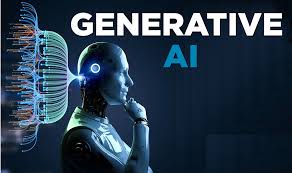Generative AI: The Hidden Environmental Costs Impacting Us All
Generative AI is completely transforming the way we interact with technology. Its applications seem boundless, from creating stunning art to generating lifelike text and advancing scientific research. Yet, behind the excitement of these innovations lies an urgent issue: the environmental cost. As we push the boundaries of what AI can achieve, we must confront its impact on our planet.
The Rising Demand for AI and Its Environmental Footprint
Generative AI, a powerful tool that generates new content and solutions, is driving a significant increase in data center usage. Data centers are the unseen engines of our digital world, housing the servers that process and store the data essential for AI operations. But this growth is not without consequences.
A recent report from Morgan Stanley reveals a startling projection: data centers could emit 2.5 billion tons of greenhouse gases by 2030. This figure is three times higher than previous estimates, primarily due to the escalating demand for AI services. As more businesses and applications rely on AI, the need for additional data centers grows, along with their environmental impact.
How AI Drives Up Emissions
The energy demands of generative AI are staggering. Training AI models involves complex computations that require substantial computational power. For instance, large AI models might use thousands of GPUs running around the clock. This intense processing consumes a significant amount of electricity, much of which still comes from fossil fuels.In 2024 alone, emissions related to AI are expected to reach 200 million tons. By 2030, this number could more than triple, reaching 600 million tons. This surge highlights a pressing issue: the tech industry’s rapid expansion is outpacing efforts to reduce its carbon footprint.
The Water Cooling Conundrum
Another hidden environmental cost is the water used for cooling data centers. To prevent servers from overheating, many data centers employ water-cooling systems. While these systems are more energy-efficient than air cooling, they require vast amounts of water.
This reliance on water is problematic as global water scarcity intensifies. In areas already facing water shortages, the demand for cooling water exacerbates the problem, making it harder for tech companies to claim they are truly sustainable.
Striving for a Sustainable Future
The challenge is clear: how can we continue to advance AI while minimizing its environmental impact? There are several approaches that could help balance innovation with sustainability:
- Renewable Energy: Data centers must transition to renewable energy sources such as wind or solar power. This shift could significantly reduce their reliance on fossil fuels and lower overall emissions.
- Energy Efficiency: Investing in energy-efficient technologies, from hardware to cooling systems, can help decrease the amount of power needed to run AI operations. Innovations in server design and cooling methods are essential to this effort.
- Water Conservation: Exploring alternative cooling technologies that do not rely on water can help address the issue of water scarcity. For instance, advanced air-cooling systems or innovative heat exchange methods could reduce water use.
- Collaborative Efforts: Achieving a sustainable future for AI requires a collaborative approach. Tech companies, policymakers, and environmental organizations must work together to develop and implement practices that minimize environmental impact while fostering technological progress.
The Broader Implications of AI-Driven Emissions
As we grapple with the environmental impact of generative AI, it’s crucial to understand the broader implications for our climate goals. The tech industry, with its significant carbon footprint, plays a critical role in global efforts to combat climate change. According to recent data, the tech sector accounts for about 40% of annual emissions in the United States. This makes it clear that addressing the emissions from data centers is not just a niche issue but a central challenge in our fight against global warming.
The growing emissions from AI-driven data centers highlight a paradox in our pursuit of technological advancement. While AI promises to solve complex problems and create new opportunities, it also contributes to the very issues it seeks to address, such as climate change. This paradox underscores the need for a balanced approach, where technological progress does not come at the expense of our environmental goals.
Case Studies: Leading the Way in Sustainable AI
Several companies and organizations are already taking steps to address the environmental impact of AI. For instance, some tech giants are investing heavily in renewable energy projects to power their data centers. Google, for example, has made significant strides towards achieving its goal of operating entirely on renewable energy. Their efforts include large-scale solar and wind projects, which help offset the carbon footprint of their operations.
Similarly, companies are exploring innovative cooling technologies to reduce water usage. For example, Microsoft has experimented with using seawater to cool its data centers, which can be more sustainable than traditional water-cooling methods. These case studies illustrate that while the challenge is substantial, it is not insurmountable.
Conclusion
Generative AI offers incredible potential to transform industries and improve our lives. However, as we harness this technology, we must also consider its environmental costs. The projected rise in data center emissions and the strain on water resources are serious concerns that demand immediate action.
By embracing renewable energy, advancing energy efficiency, and finding sustainable cooling solutions, we can work towards a future where AI innovation and environmental responsibility go hand in hand. The future of technology depends on our ability to innovate responsibly and ensure that progress does not come at the expense of our planet.For a deeper dive into the environmental impact of generative AI and potential solutions, visit Today News Pakistan.



